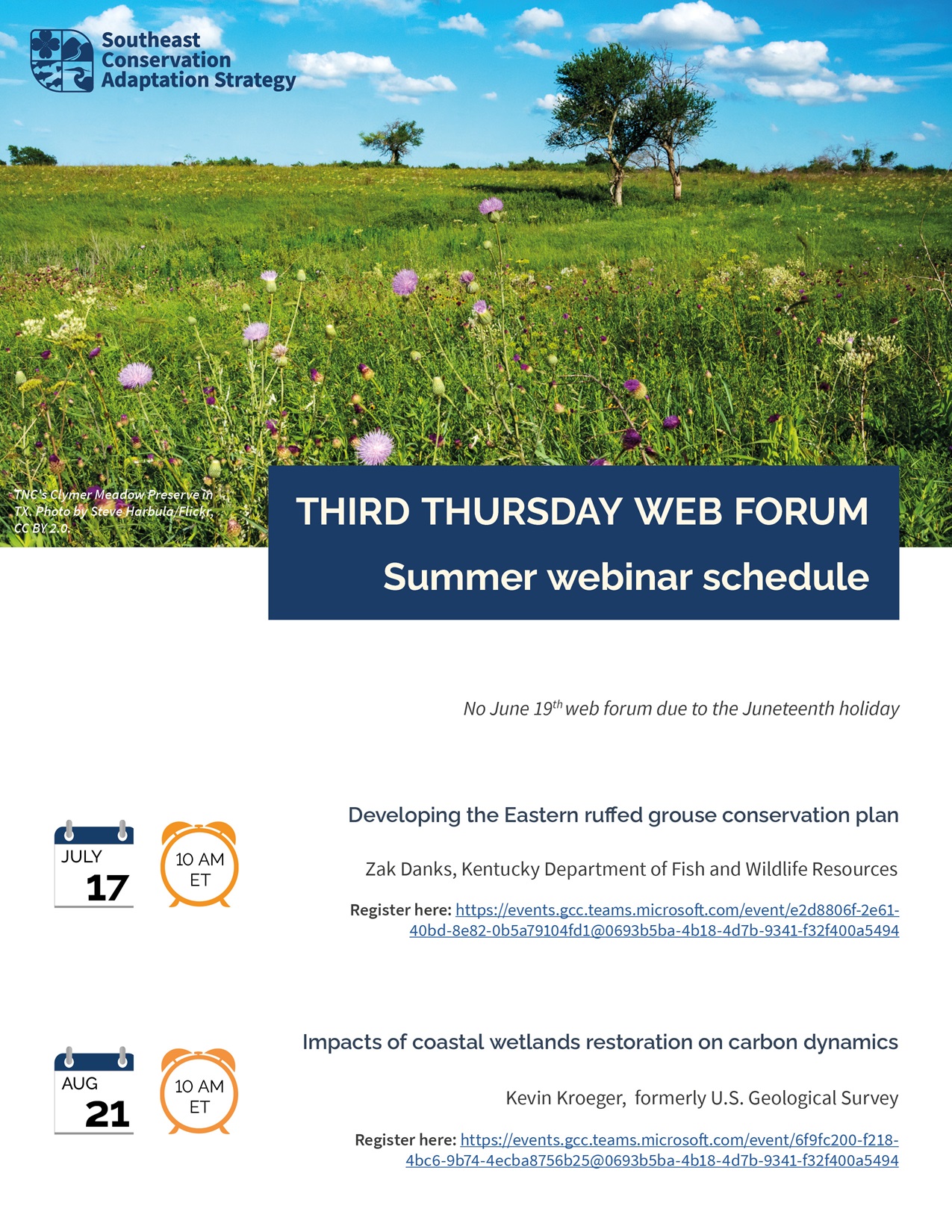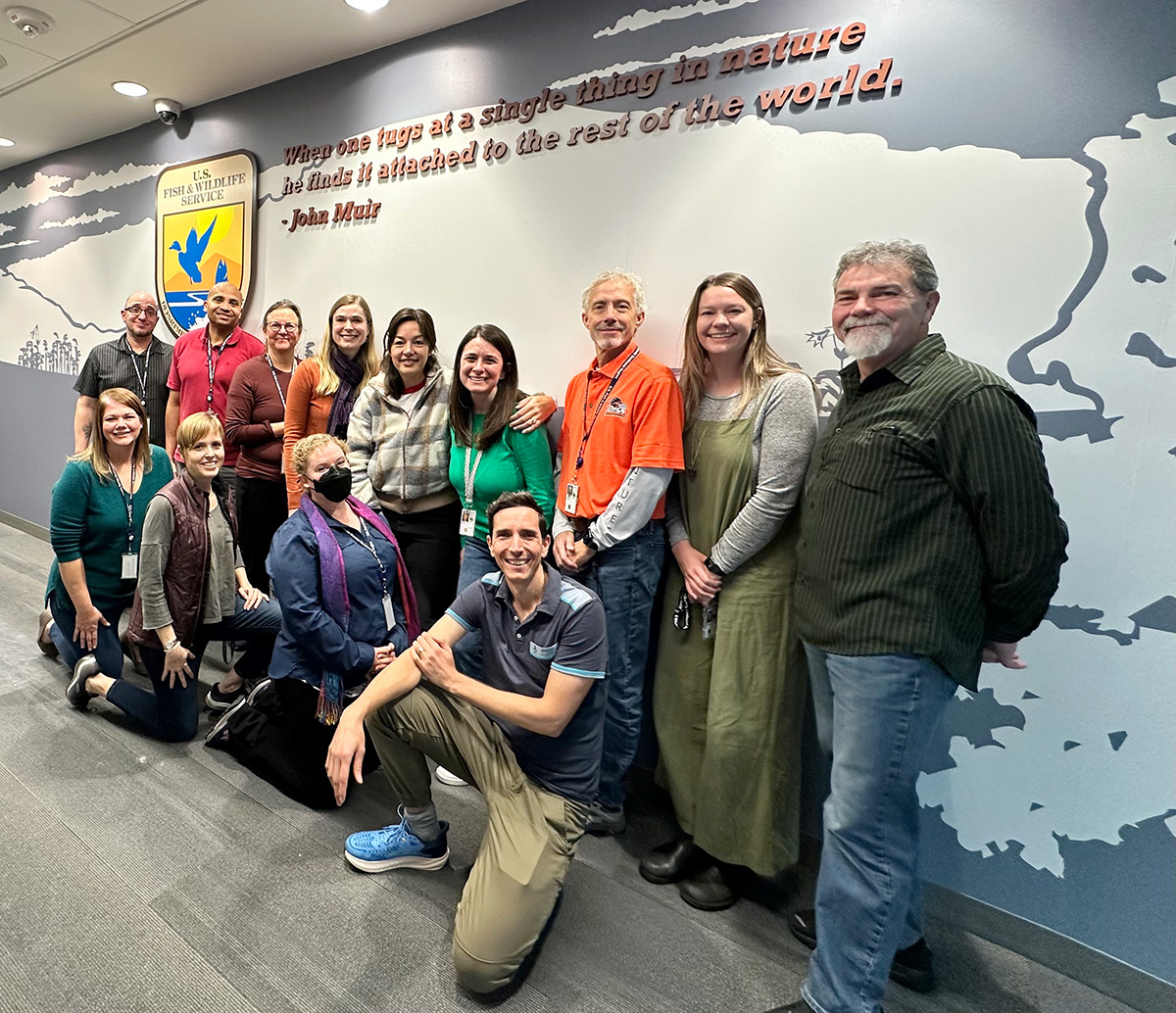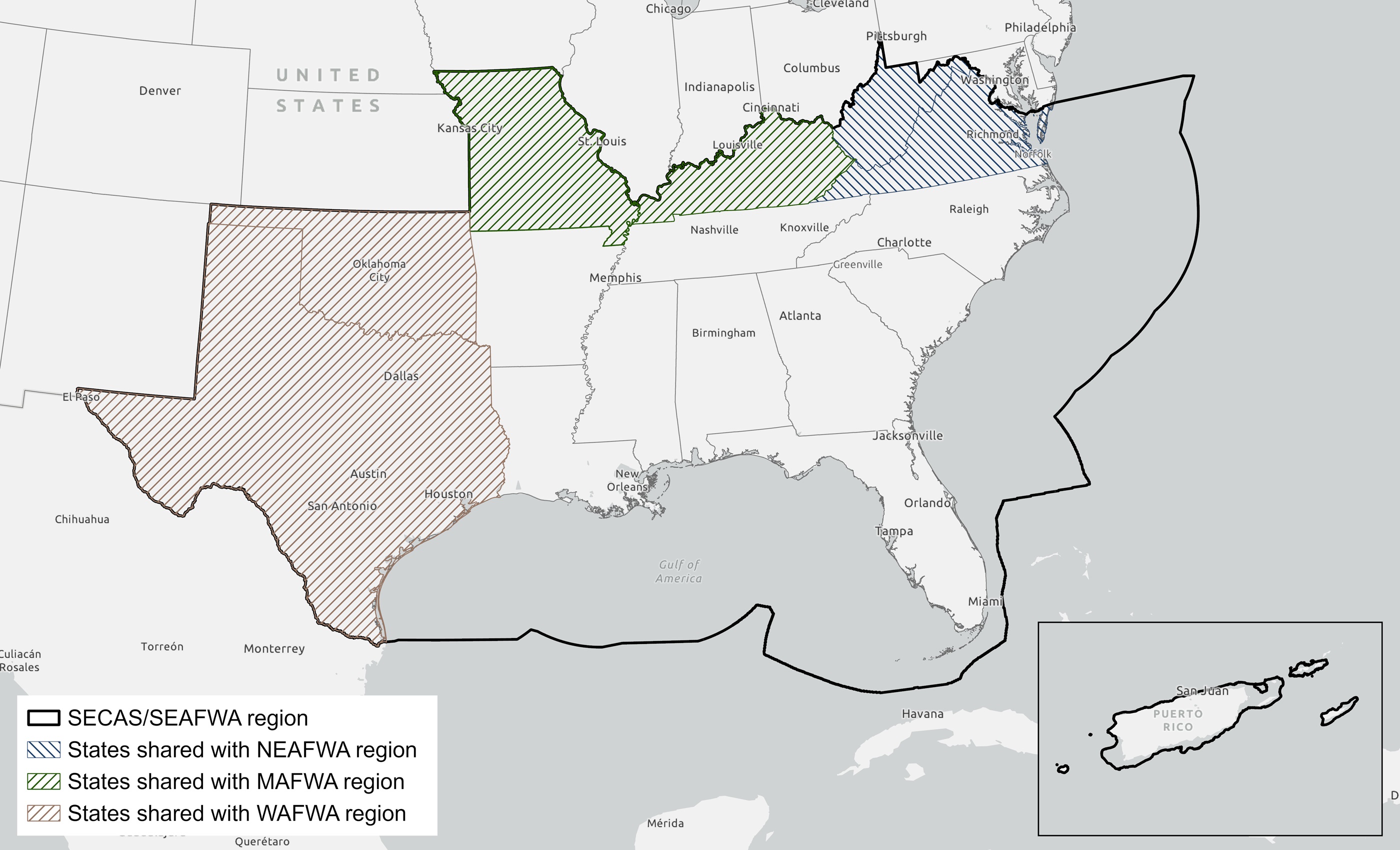SECAS brings together public and private organizations around a bold vision for the future of our region. We're connecting the lands and waters of the Southeast and Caribbean to support healthy ecosystems, thriving fish and wildlife populations, and vibrant communities. With a data-driven spatial plan and an ambitious regional goal, SECAS helps accelerate conservation action in the places where it will make the biggest impact.
From the blog
-

Upcoming webinars in the SECAS Third Thursday Web Forum series. Summer 2025 Third Thursday Web Forum schedule
Check out the Third Thursday Web Forum schedule for the 2025 summer season! SECAS hosts these webinars on the third Thursday of each month at 10 am Eastern time. »Click here for an interactive pdf of the flyer with links to register.
-
June 19th, 2025 @ 10 am ET: Cancelled for Juneteenth federal holiday
-
July 17th, 2025 @ 10 am ET: Developing the Eastern ruffed grouse conservation plan. Rescheduled from March, the July presentation by Zak Danks with the Kentucky Dept. of Fish and Wildlife Resources will highlight a cross-state and international regional planning effort to guide future efforts to conserve ruffed grouse population, which have declined by at least half during the last 30 years within their eastern range.
-
-

SECAS staff and friends met in person in November 2023 at the U.S. FWS Southeast Regional Office in Atlanta, GA to plan the next Blueprint update. SECAS staffing now and into the future
The Southeast Conservation Adaptation Strategy (SECAS) has been through a lot since it was formed in 2011. It’s evolved from a way to integrate the work of the Southeast Landscape Conservation Cooperatives (LCCs) to a fully fledged regional partnership with explicit goals, a spatial plan, and a network of people and organizations shaping the conservation future of the Southeast and U.S. Caribbean. Along the way, funding for staff positions has mostly come from the U.S. Fish and Wildlife Service, but has also come from the Southeast Association of Fish and Wildlife Agencies (SEAFWA) and four different federal agencies (the National Park Service, National Oceanic and Atmospheric Administration, U.S. Geological Survey, the U.S. Forest Service). State wildlife agencies and universities have also provided free office space for staff.
Read more... -

The SECAS partnership follows the SEAFWA region, which shares states with the Northeastern, Midwest, and Western Associations of Fish and Wildlife Agencies. Advancing cross-regional conservation at the North American Wildlife and Natural Resources Conference
Last month, conservation leaders from across the nation and representing broad sectors attended the 90th annual North American Wildlife and Natural Resources Conference in Louisville, KY. Hosted by the Wildlife Management Institute, this annual conference sets the stage for sharing visionary ideas about cross-collaborative conservation.
This year, SECAS staff worked closely with representatives from the Association of Fish and Wildlife Agencies (AFWA), the Wildlife Management Institute, and the Native American Fish and Wildlife Society (NAFWS) to plan a special session at the conference.
Read more...
Visit the SECAS blog for a full archive of posts.
